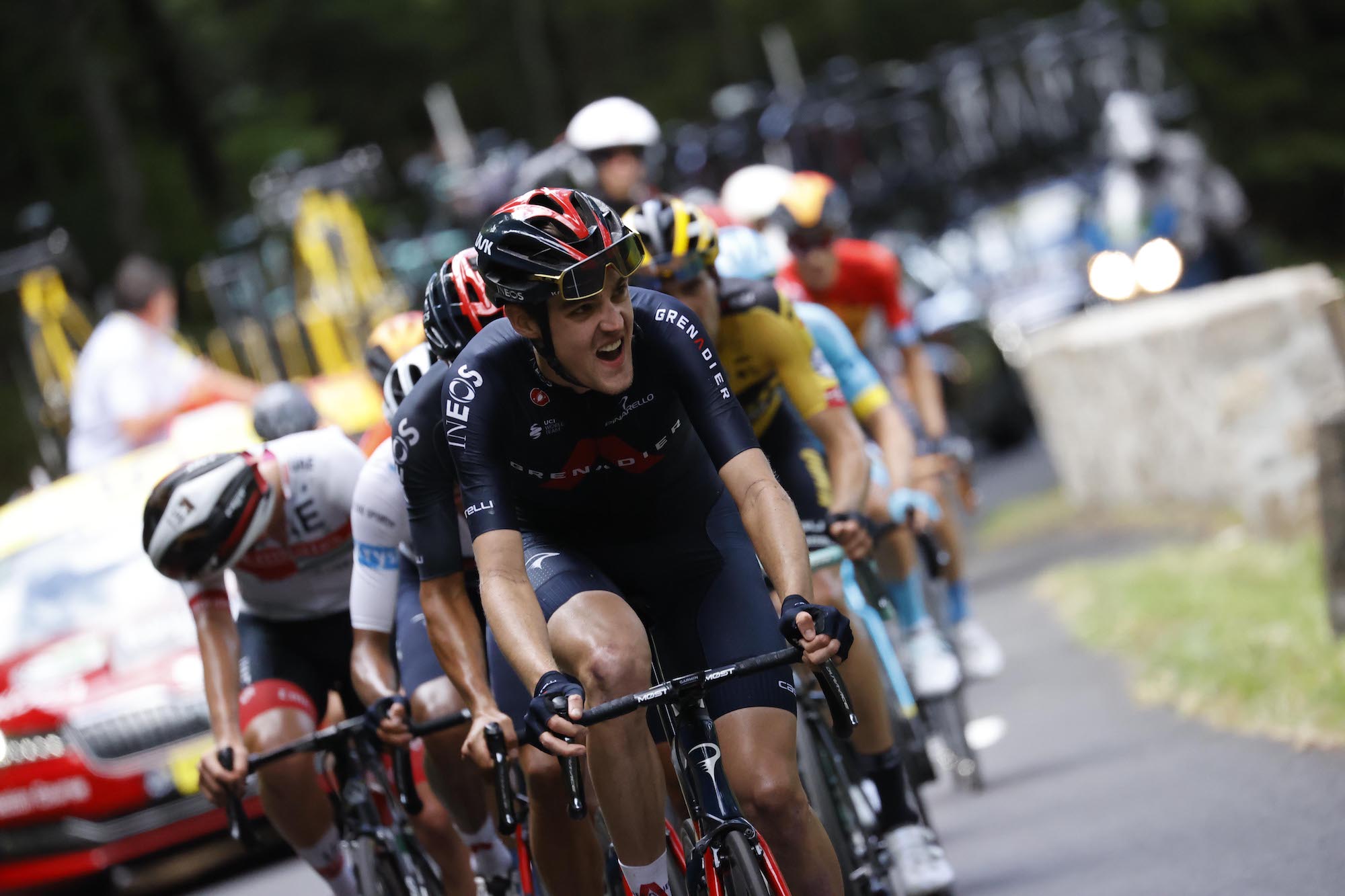Why are so many climbing records being broken at the Tour de France 2020?
A number of iconic climbs have seen their record times smashed by this year's peloton

Pavel Sivakov leads the GC group on stage 13 of the 2020 Tour de France (Yuzuru Sunada)
The Tour de France is fast this year. At least, that's what the riders are saying.
GC contenders are clinging on to the Jumbo-Visma mountain train for dear life, whilst on the flats the battle for the green jersey erupts between Bora-Hansgrohe and Deceuninck - Quick-Step.
After a four-month fallow period, there are zero days off for bike racers at the 2020 French Grand Tour.
"So, once again, according to statistics, we're going really, really fast and I can confirm that on the bike the level is really high," Nicolas Roche told Cycling Weekly in the first week of the race. "If you look at the top 20 today on GC, most of the guys have had top 10s in Grand Tours before. I think this is definitely the Tour de France with the biggest level I've ever ridden, as a whole.
"I was in the breakaway [on stage six to Mont Aigoual] with Alexey Lutsenko (Astana), the numbers are pretty incredible for a semi-mountain stage. And then on stage eight we look at the climb, they smashed the record by like 45 seconds or something. It's also very relevant as to how high the level is today."
Times on the Col de Marie Blanque, Col de Peyresourde and Grand Colombier have all tumbled.
The latest race content, interviews, features, reviews and expert buying guides, direct to your inbox!
Pogačar's time on the Peyresourde as he gapped his GC contenders was 24-35, Mikel Landa and Richie Porte were a bit further back at 25-12, and Nairo Quintana and Primož Roglič at 25-22.
The previous fastest time of 25-22 by Alexandre Vinokourov and Iban Mayo was set back in 2003, where Lance Armstrong and Jan Ullrich only ascended the climb in 26-15.

Solely comparing just the times and names, logically it follows that eyebrows would be raised. But taking these numbers out of context fails to properly analyse the racing that's going on behind them.
Even if any of the 176 riders are dabbling in some grey-area performance enhancement, it's certainly unlikely to be at the level of the guys who set the record in the first place.
Instead, there are a number of reasons such rides have been possible, which intersect to make climbing times and records almost impossible to compare in terms of which rider across different eras was actually going the fastest.
Firstly, let's take the tactics. Tadej Pogačar went nearly two minutes quicker than Thibaut Pinot's time up the Grand Colombier. Pinot attacked from 11km out at the 2019 Tour de l'Ain whereas Pogačar got driven to the top by the Jumbo-Visma train before outsprinting Roglič in the final metres to cross the line first.
As we've seen numerous times even just this year, the common tactic for summit finishes sees riders not wanting to risk long-range attacks in case they blow up, whereas in years gone by climbers would launch from nearer the bottom.
Along with the obvious advances in training nutrition and equipment when comparing times from nearly two decades ago, the higher level of domestiques who set the pace up climbs also plays a big part.
With bikes allowed to weigh a minimum of 6.8kg, one former pro (who says their bike weighed closer to 10kg when they were racing) estimates that for every kilogram you lose from your bike weight, you gain up to four minutes up a climb.
As for the particular climbs highlighted on this year's race, the Pyrenean climbs were on relatively short stages, with favourable weather. The Marie Blanque was also only preceded by a category one and category three climb, while there was a slight tailwind on the day the peloton tackled the Peyresourde. The condition of the road surface also plays a factor, with tarmac smoother than in the early 2000s, this creates less rolling resistance.
Comparing climbing times may be fun, and something for people to get angry with each other about on Twitter. But in reality, they are hard to compare without taking into account a myriad of factors, something a number of coaches told French newspaper L'Équipe earlier in the week.
For Adam Yates (Mitchelton-Scott) it hasn't been about the pace of the race uphill, but more the unrelenting speed of the flats.
"It's a hard pace [on the climbs] but it’s more in the middle of the stages, in the flats and the valleys, sprinting out of corners and stuff," the Brit said on the second rest day. "The peloton is at such a high level you’re fighting for your place. It’s not really the pace on the climbs, it’s the pace of the whole race which is making the difference."
With Pogačar trailing Primož Roglič by only 40 seconds heading into the third week of the Tour de France and the young Slovenian promising to attack, it's likely things will only get tougher for the riders in the Alps. Keep the gruppetto in your prayers.
Jonny was Cycling Weekly's Weekend Editor until 2022.
I like writing offbeat features and eating too much bread when working out on the road at bike races.
Before joining Cycling Weekly I worked at The Tab and I've also written for Vice, Time Out, and worked freelance for The Telegraph (I know, but I needed the money at the time so let me live).
I also worked for ITV Cycling between 2011-2018 on their Tour de France and Vuelta a España coverage. Sometimes I'd be helping the producers make the programme and other times I'd be getting the lunches. Just in case you were wondering - Phil Liggett and Paul Sherwen had the same ham sandwich every day, it was great.